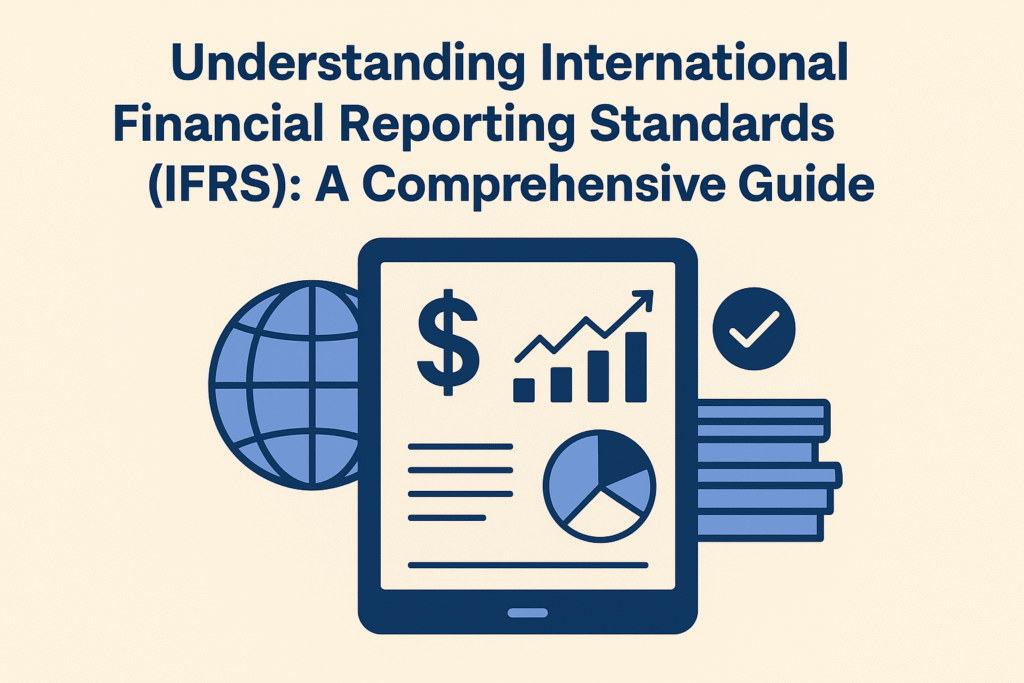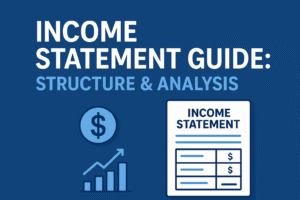In today’s interconnected global economy, consistency and transparency in financial reporting are crucial. Businesses, investors, and regulators across borders rely on a common financial language to compare performance, assess risks, and make informed decisions. This is where International Financial Reporting Standards (IFRS) play a pivotal role. IFRS is a globally recognized accounting framework that ensures companies present their financial information in a consistent, comparable, and transparent manner, regardless of where they operate.
In this guide, we will take a deep dive into what IFRS is, its history, reporting requirements, comparison with U.S. GAAP, its importance in global finance, and how it has become the backbone of international financial communication.
What Are International Financial Reporting Standards (IFRS)?
International Financial Reporting Standards (IFRS) are a set of accounting rules and guidelines developed by the International Accounting Standards Board (IASB). These standards provide a common framework for preparing financial statements, ensuring they are transparent, consistent, and comparable across countries.
The purpose of IFRS is to:
- Enhance transparency in financial reporting.
- Promote global comparability between businesses.
- Improve accountability to investors, regulators, and stakeholders.
- Support efficient capital markets by enabling cross-border investment decisions.
IFRS is used in over 140 jurisdictions worldwide, including the European Union, Asia-Pacific nations, and many emerging economies. While the United States continues to rely on Generally Accepted Accounting Principles (GAAP), IFRS has become the dominant global accounting standard.
In-Depth Overview of IFRS
At its core, IFRS provides principles-based accounting standards rather than rigid rules. This allows companies to apply judgment and flexibility in reflecting the true nature of their business transactions, while still maintaining comparability.
Some of the key areas IFRS governs include:
- Recognition of revenue and expenses – when and how income and costs should be reported.
- Asset and liability measurement – valuation methods, including fair value and historical cost.
- Disclosure requirements – ensuring stakeholders receive adequate and relevant information.
- Financial instruments – accounting for derivatives, investments, and other complex instruments.
- Leases and consolidations – transparency in reporting financial obligations and group accounts.
By standardizing these areas, IFRS helps reduce misrepresentation and enhances trust in financial reporting across borders.
Comparing IFRS and GAAP: Key Differences Explained
Although both IFRS and GAAP aim to present accurate financial information, there are important differences between the two systems:
- Origin:
- IFRS is principles-based, developed by IASB in London.
- GAAP is rules-based, developed by the Financial Accounting Standards Board (FASB) in the U.S.
- Inventory Valuation:
- IFRS prohibits the use of Last-In, First-Out (LIFO).
- GAAP allows both LIFO and FIFO.
- Development Costs:
- IFRS allows capitalization of development costs if certain criteria are met.
- GAAP typically requires expensing such costs.
- Revaluation of Assets:
- IFRS permits revaluation of certain assets (like property, plant, and equipment) to fair value.
- GAAP does not generally allow upward revaluation.
- Terminology and Presentation:
- IFRS uses terms like “statement of financial position.”
- GAAP uses “balance sheet.”
These differences impact how companies report financials, making convergence between IFRS and GAAP an ongoing global discussion.
Essential IFRS Reporting Requirements
IFRS requires companies to provide a complete set of financial statements, ensuring stakeholders gain a clear and comprehensive picture of performance and financial position. The required components include:
Statement of Financial Position
Also known as the balance sheet, this outlines a company’s assets, liabilities, and equity at a specific date. IFRS emphasizes clarity and fair value representation, helping stakeholders understand the company’s financial health.
Statement of Comprehensive Income
This shows both profit or loss and other comprehensive income (OCI), which includes unrealized gains or losses, foreign currency adjustments, and revaluation reserves. IFRS stresses transparency by separating regular income from broader equity changes.
Statement of Changes in Equity
This statement tracks movements in shareholders’ equity, including retained earnings, issued capital, dividends, and reserves. It helps investors see how profits are reinvested or distributed.
Statement of Cash Flows
Cash flow reporting is divided into operating, investing, and financing activities. IFRS requires disclosure of both direct and indirect cash flow methods, providing insights into liquidity and financial flexibility.
The Evolution and History of IFRS
The origins of IFRS can be traced back to 1973, when the International Accounting Standards Committee (IASC) was formed to create uniform accounting rules. In 2001, the International Accounting Standards Board (IASB) replaced IASC, taking responsibility for issuing new standards under the IFRS label.
Since then, IFRS has undergone significant updates to address evolving business models, globalization, and financial complexities. Landmark standards such as IFRS 9 (Financial Instruments), IFRS 15 (Revenue from Contracts with Customers), IFRS 16 (Leases), and IFRS 17 (Insurance Contracts) have reshaped how companies report key financial areas.
Global Adoption of IFRS: Who Uses It?
Over 140 countries have adopted IFRS, including:
- European Union: Mandatory for all listed companies since 2005.
- Asia-Pacific: Countries like Australia, New Zealand, and South Korea.
- Emerging Economies: Brazil, Russia, India (converged form – Ind AS).
The United States has not adopted IFRS but continues to work with IASB toward convergence. The lack of full adoption creates challenges for multinational companies operating in both GAAP and IFRS jurisdictions.
Key Distinctions Between IFRS and GAAP
While both aim for transparency, IFRS is principles-based, emphasizing professional judgment, while GAAP is rules-based, providing detailed guidance for specific scenarios.
- IFRS allows greater flexibility but may create inconsistencies in application.
- GAAP ensures uniformity but can be rigid and less adaptable to evolving business practices.
This distinction influences how financial statements are interpreted globally and why multinational companies must remain vigilant about cross-border compliance.
The Importance of IFRS in Global Finance
IFRS is not just an accounting tool—it is a bridge that connects global markets. Its importance lies in:
- Investor Confidence: Transparent reporting builds trust and encourages foreign investment.
- Global Comparability: Companies in different countries can be compared on equal grounds.
- Cost Efficiency: Multinationals avoid preparing multiple sets of financials for different jurisdictions.
- Regulatory Oversight: Governments and regulators rely on IFRS to monitor financial stability.
Ultimately, IFRS strengthens global capital markets by creating a unified financial language.
Final Thoughts
International Financial Reporting Standards (IFRS) have transformed financial reporting into a globally consistent, transparent, and comparable system. While differences with U.S. GAAP remain, IFRS continues to gain ground as the benchmark for international business reporting. For investors, regulators, and businesses alike, IFRS serves as a foundation for decision-making in an increasingly interconnected economy.
As global finance evolves, IFRS will remain central to ensuring trust, efficiency, and comparability in financial reporting—making it one of the most important frameworks in the world of accounting and finance.







